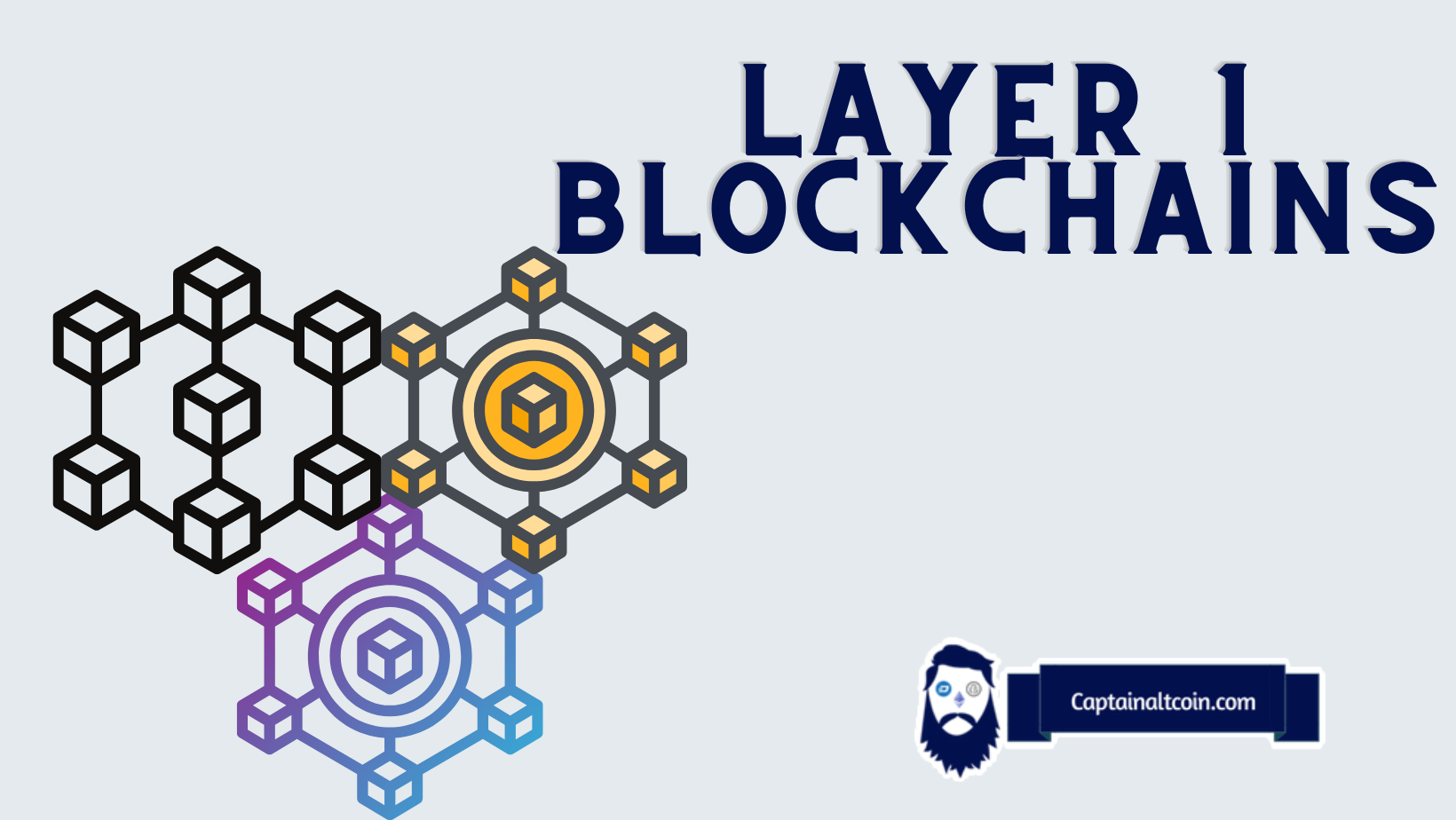
What you'll learn 👉
💰 The Best Newer Layer 1 Crypto Projects to Invest in
The race is on to identify the best Layer 1 blockchain projects has never been harder in crypto. A new wave of Layer 1 blockchain projects is emerging, each offering unique features and benefits.
This article provides an extensive Layer 1 blockchain list and a deep dive into the top Layer 1 blockchains that are set to make a significant impact in the crypto space.
Whether you’re a seasoned investor or a newcomer to the world of cryptocurrencies, understanding the landscape of Layer 1 blockchains is crucial.
These foundational blockchains serve as the bedrock for other crypto projects, providing the necessary infrastructure for Layer 2 solutions and beyond. Our list of Layer 1 blockchains offers a detailed overview of these essential platforms, helping you to identify the best Layer 1 crypto investments for your portfolio.
| 🌐 Sui (SUI) | A permissionless Layer 1 blockchain that utilizes the Move programming language to deliver high-speed, low-cost transactions while addressing scalability, security, and user-friendliness for a variety of decentralized applications |
| ☝️ Alephium (ALPH) | A promising Layer 1 blockchain that excels in scalability with its BlockFlow sharding algorithm, security through Bitcoin’s PoW and UTXO model |
| 🌐 Near Protocol (NEAR) | Developer-friendly, empowers creators, open-source infrastructure, highly scalable and fast. |
| 👻 Sonic (S) | Scalable, fast blockchain with a growing ecosystem, plans to become the “nervous system” behind smart cities. |
| 🔒 Algorand (ALGO) | Pure Proof-of-Stake blockchain prioritizing security and efficiency, complete decentralization, fast transaction speeds, low gas fees. |
| ☝️ Harmony (ONE) | Low-cost, high-performance blockchain ideal for dApps, leading Layer 1 blockchain of 2021. |
| 🏢 Hedera (HBAR) | Public distributed ledger designed for enterprise use, carbon-negative network, lightning-fast transaction speeds. |
| 🧩 Shardeum | EVM-compatible smart contract Layer 1 blockchain, dynamically sharded network with infinite scalability, true decentralization, and solid security. |
| 🛠️ Aptos (APT) | Cutting-edge blockchain combining Proof-of-Stake and Proof-of-Work, increased scalability, security, usability, and reliability. |
| 🔗 Kadena | Efficiently transacts and shares data in a decentralized manner, addresses speed, scalability, and security issues. |
| 🤫 Secret Network | Layer 1 blockchain with its own consensus and on-chain governance, allows for privacy-focused smart contracts. |
| 🌙 Moonbeam | Parachain on layer 0 network, Polkadot, allows cross-chain integration, Ethereum-compatible smart contract platform. |
| 🌌 Aurora | Offers a full-featured Ethereum Virtual Machine (EVM) and a powerful cross-chain bridge, links to other Ethereum contracts and assets. |
| 🌊 Flow | Serves as a foundation for games, apps, and digital assets, leverages Cadence – a programming language specifically tailored for digital assets. |
| 🏛️ Metis | Enables developers to build fast, secure, and decentralized applications, based on the Cosmos-SDK framework and utilizes Tendermint consensus. |
| 🐝 Hive | Enables developers to create decentralized applications, uses a delegated proof-of-stake consensus algorithm with an on-chain governance system. |
🤔 What Are Layer 1 Cryptos? Understanding the Fundamentals
Are you new to the crypto game and want to understand Layer 1 cryptos? Let me start by explaining what a Layer 1 project is. A layer 1 project is basically a blockchain platform or ecosystem that serves as the base layer for other crypto projects, like Ethereum. On top of this layer sits Layer 2 projects such as Non-Fungible Tokens (NFTs) or DeFi platforms, but it is important to note that usually, Layer 1 is responsible for providing security to the entire network itself.
It’s important to know what these basics mean when it comes to investing in the crypto space because when the market could be dipping, stabilizing your investments may require getting back to those fundamentals – and that means investing in those tried-and-true Layer 1 blockchains that have been popular for years. So if you’re unsure, don’t forget to take a look at these trusty options!
⚖️ Layer 1 vs. Layer 2 Crypto Projects: How They Differ and Which One to Choose
When it comes to smart contract platforms, there is a blockchain trilemma that makes it difficult to achieve decentralization, security and scalability all in the same package. While some platforms, like Bitcoin and Ethereum, are secure and decentralized but lack scalability, other solutions like Binance Smart Chain are highly scalable but weak in terms of decentralization. As a result, many investors have turned to other platforms in search of better solutions to their needs.
These solutions can be divided into two categories: Layer 1 and Layer 2 crypto projects. Layer 1 refers to the original blockchain architecture that enables standard functions such as transactions via cryptocurrencies like Bitcoin. Then there’s Layer 2 which consists of protocols that build directly on top of the Layer 1 structure for the purpose of providing cost-effective and faster solutions for users. Examples of this would be the Bitcoin Lightning Network or Liquid Network on one side, and Arbitrum or Polygon when looking at Ethereum.
Each layer has different characteristics which make them desirable in various use cases. Before investing in any kind of blockchain project, it’s important to take some time (and do your due diligence), to determine whether a Layer 1 or Layer 2 project is right for you – both come with their own advantages and disadvantages depending on what you want out of it – so understanding the difference between them can help you make an informed decision about which one best meets your requirements.
🚀 Top New Layer 1 Crypto Projects: Which Ones Deserve Your Investment?
If you want to know which crypto projects to invest in now, then you need to take a look at the top new Layer 1 crypto projects. With so many cryptos available, it can be hard to decide where to put your money. That’s why we’ve compiled a list of 18 of the best Layer 1 crypto projects that are proving popular with investors.
These are some of the most promising and reliable coins out there, so if you’re considering investing in a cryptocurrency, it pays to do your research and check out these top new Layer 1 cryptos. Every coin here has garnered attention from both experienced and beginner investors, making them an ideal choice if you’re looking for quick returns or long-term investments. With their solid reputation and massive popularity among traders, you can trust that these cryptocurrencies are worth your investment!
☝️ Alephium (ALPH)
Alephium distinguishes itself as a promising Layer 1 blockchain through several notable innovations. One of its standout features is its innovative scalability, achieved through the BlockFlow sharding algorithm. This technology allows Alephium to process over 10,000 transactions per second, effectively addressing the high throughput challenge that many blockchain networks face.
In terms of security and decentralization, Alephium leverages foundational technologies from Bitcoin, such as Proof-of-Work (PoW) and the UTXO model. This integration ensures that Alephium inherits robust security measures and maintains a high degree of decentralization.
Alephium also prioritizes energy efficiency with the introduction of Proof of Less Work (PoLW). This consensus mechanism significantly reduces energy consumption by over 87% compared to traditional PoW systems, making Alephium a more environmentally friendly option.
Furthermore, Alephium offers advanced smart contract capabilities by combining Bitcoin’s UTXO model’s security with Ethereum’s account model’s programmability. This stateful UTXO approach enables secure and efficient smart contract development, blending the strengths of both major blockchain technologies.
🔝 Near Protocol (NEAR): A Developer-Friendly Blockchain That Aims to Empower Creators
The NEAR Protocol is making waves as a developer-friendly blockchain aimed at empowering creators. With its open-source infrastructure, NEAR allows for the development of decentralized applications (DApps).
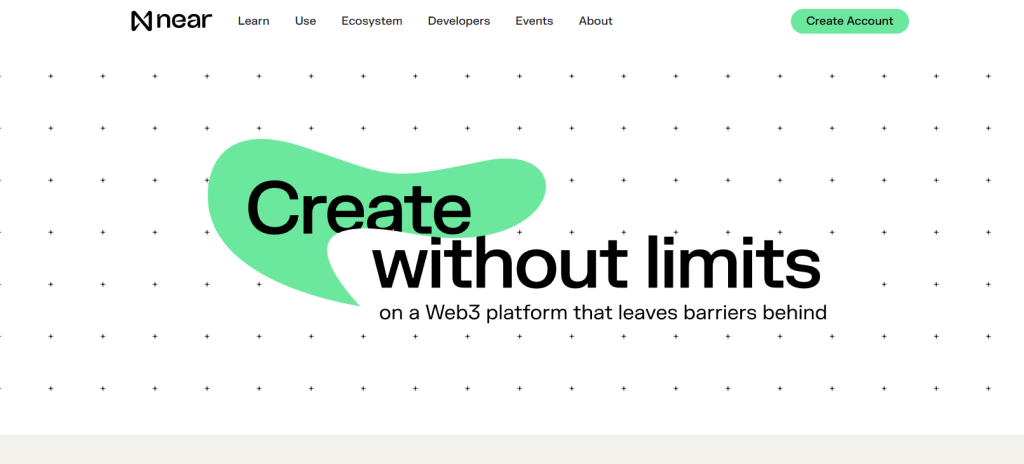
Not only does it provide a secure foundation for DApp creation, but it is also highly scalable and fast. This means that developers can quickly build and deploy their apps with ease – something that’s not always possible on other Layer 1 blockchains.
The native token for this blockchain is NEAR, which serves as the fuel for the entire ecosystem. It incentivizes users to play a role in maintaining the network – by staking tokens, running validator nodes or participating in governance –
This makes NEAR an attractive option for developers who want to build and deploy their applications quickly, easily, and securely. It also provides a great opportunity for investors interested in long-term gains as the network grows in popularity. With its developer-friendly environment and scalability, NEAR is sure to become one of the most sought after Layer 1 blockchains in the near future.
🔝 Soinc (S): A Scalable and Fast Blockchain with a Growing Ecosystem
Fantom (FTM) is being touted as one of the best Layer 1 crypto projects, with big plans to become the “nervous system” behind any developed smart cities in the future. It’s led by the powerful developer Andre Cronje, who has great ambitions for his Distributed Ledger Technology.
In 2025, Fantom rebranded to Sonic with thee native token now named ‘S’ instead of ‘FTM’.
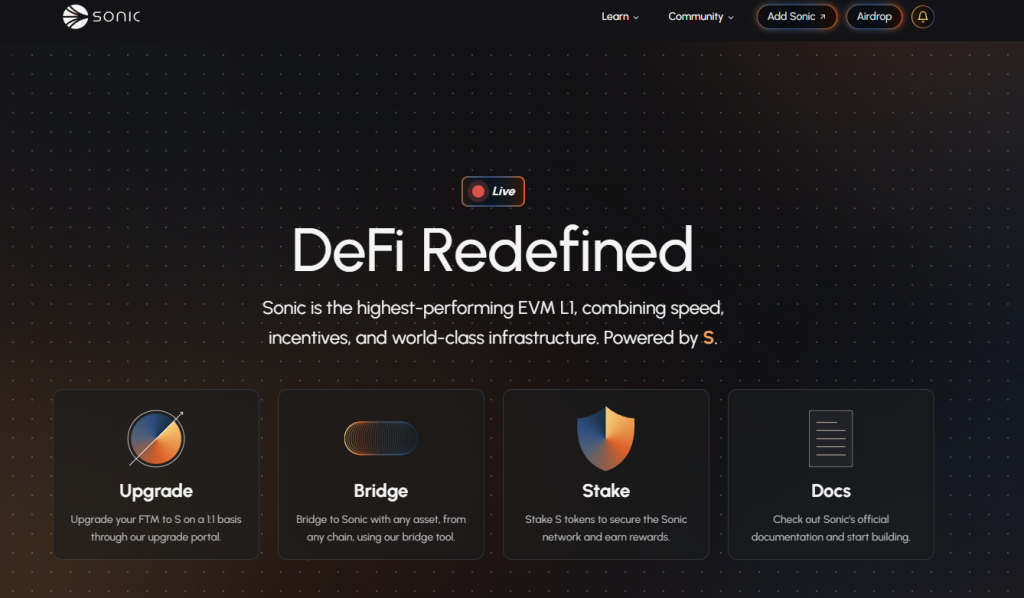
With its Directed Acyclic Graph consensus algorithm, it offers excellent scalability and fast crypto transactions that surpass the current standard. Thanks to its high-performance Virtual Machine, developers can easily create powerful smart contracts and deploy them onchain. S token holders can also take part in governance through staking or utilizing it for fees.
At a market cap of over $1.5 billion, Sonic seems like a great choice for anyone interested in getting involved in Layer 1 blockchain technology.
🔝 Algorand (ALGO): A Pure Proof-of-Stake Blockchain That Prioritizes Security and Efficiency
Algorand is a revolutionary Layer 1 blockchain that has rapidly gained popularity since its launch in 2017. It leverages a PoS consensus mechanism to ensure secure transactions and provide excellent performance. Algorand’s validators are selected randomly, making it almost impossible to know who will be the best performing validator in advance.
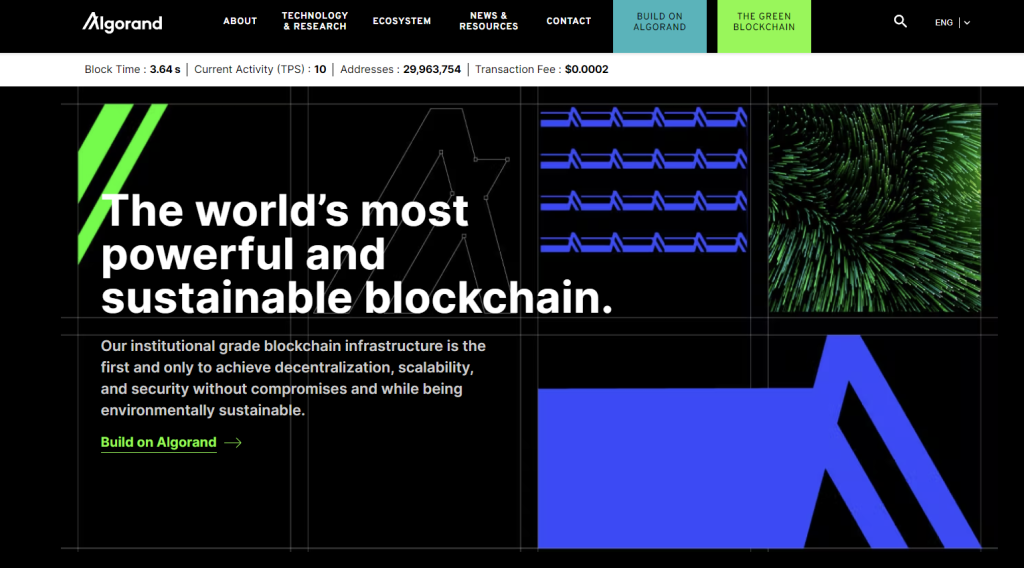
Investing in Algorand (ALGO) token offers many advantages such as complete decentralization, fast transaction speeds, low gas fees, strong team behind the project and negligible chances of hard forks. All these make it one of the top Layer 1 blockchains out there right now!
🔝 Harmony (ONE): A Low-Cost and High-Performance Blockchain That’s Ideal for dApps
Harmony (ONE) is an ideal low-cost and high-performance blockchain platform for dApps. It’s known as one of the leading Layer 1 blockchains of 2021, providing a great environment for popular dApps such as GameFi and DeFi Kingdom.
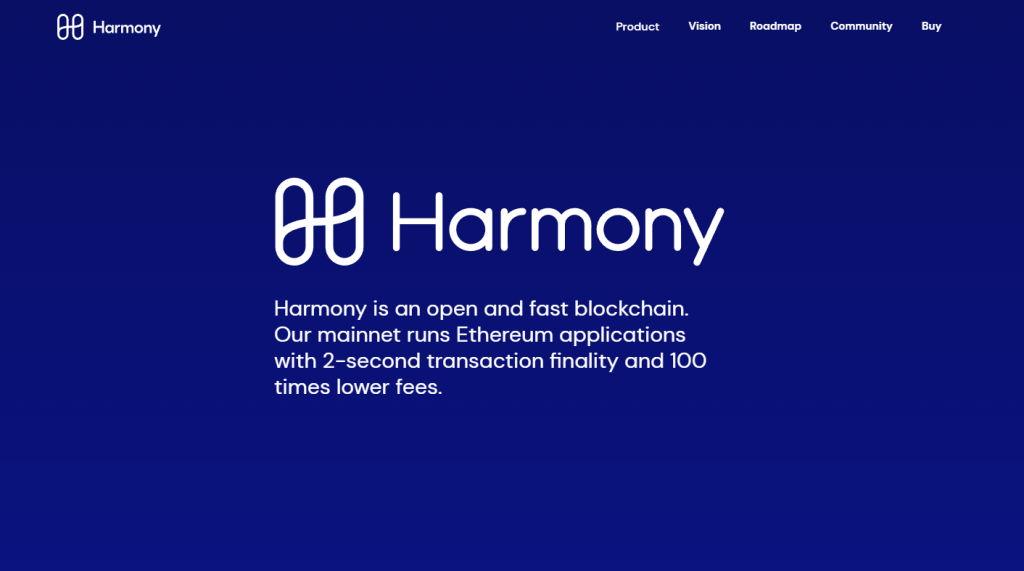
Their native token, ONE, can’t be mined but instead needs to be staked in order to earn rewards. To do so, you’ll need to install the Harmony One extension into your web browser and you’re good to go!
Harmony One has made significant progress when it comes to improving some of the weaknesses found in blockchain technology. The cryptocurrency itself has cultivated a number of partnerships across many industries, with its market cap now exceeding $250 million!
Unlike other blockchains, Harmony One is able to provide users with low transaction costs whilst also delivering maximum performance for their decentralized apps. If you’re looking for a blockchain that provides great value and performance for your dApps, then Harmony One is the perfect option!
🔝 Hedera (HBAR): A Public Distributed Ledger That’s Designed for Enterprise Use
Hedera is a carbon-negative network that acts as a distributed ledger for transaction fees and payments of all types. This includes in-app payments, micropayments and even network protection. It uses a technology called the directed acyclic graph (DAG).

This technology allows the network to achieve lightning-fast transaction speeds of up to 10,000 transactions per second (TPS) with low fees of only $0.0001 per transaction.
Hedera is also 885,000 times more energy efficient than Bitcoin. Users burn just 0.001 kilowatt-hours of energy per transaction, compared to transactions in Bitcoin that consume 885 kWh of energy. Due to this carbon-negative nature, many energy-conscious individuals have speculated for Hedera to be one of the best Layer 1 crypto projects in the near future once it gets mainstream adoption.
🔝 Shardeum
Shardeum is an EVM-compatible smart contract Layer 1 blockchain on which decentralized applications (DApps) can be deployed seamlessly. It is a dynamically sharded network with infinite scalability, true decentralization, and solid security.
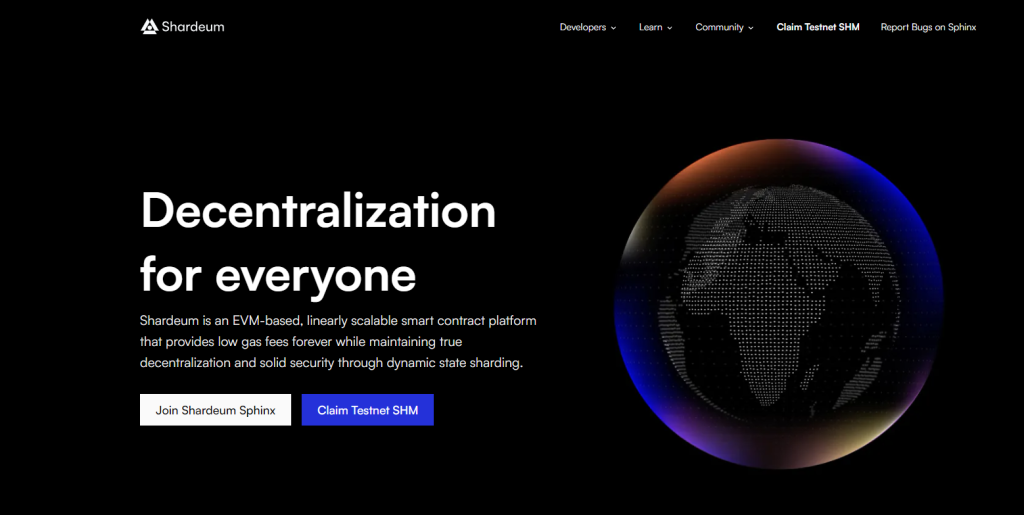
It will be the first network built to scale and accommodate billions of daily users by solving the scalability trilemma – this is considering almost all Web 3.0 networks today have issues either with decentralization or scalability.
Shardeum’s core principle is to build and operate the network in an open, collaborative, and community-driven way. The founders believe decentralization is the future for our common good and hope their efforts will eventually inspire other networks to bring decentralization across industries and communities. The platform is being developed using a unique distributed ledger project launched in early 2018, Shardus.
It will be the protocol layer of Shardeum, and it has previously demonstrated proof of concept to solve the scalability trilemma. Shardeum is indeed one of the best crypto Layer 1 projects.
Differentiators
Asides from addressing scalability trilemma, the Layer 1 platform will be EVM compatible to make it easy to host and port DApps on its network with immediate finality and low latency.
Each node added to the network will increase its throughput, making it linearly scalable. The network will also use separate ‘archive nodes’ for storing data and ‘validator nodes’ to validate transactions. This enables low-configuration devices to participate in the network, earn incentives and keep the network truly decentralized.
The unique consensus mechanism and architecture in Shardeum help it to scale with very low and stablegas fees
🔝 Aptos (APT): A Cutting-Edge Blockchain that Combines Proof-of-Stake and Proof-of-Work
Aptos is a brand new blockchain that’s pegged to be one of the best as it was created to compete against other best Layer 1 crypto projects like Solana. The cryptocurrency promises users increased scalability, security, usability and reliability over other Layer 1s.
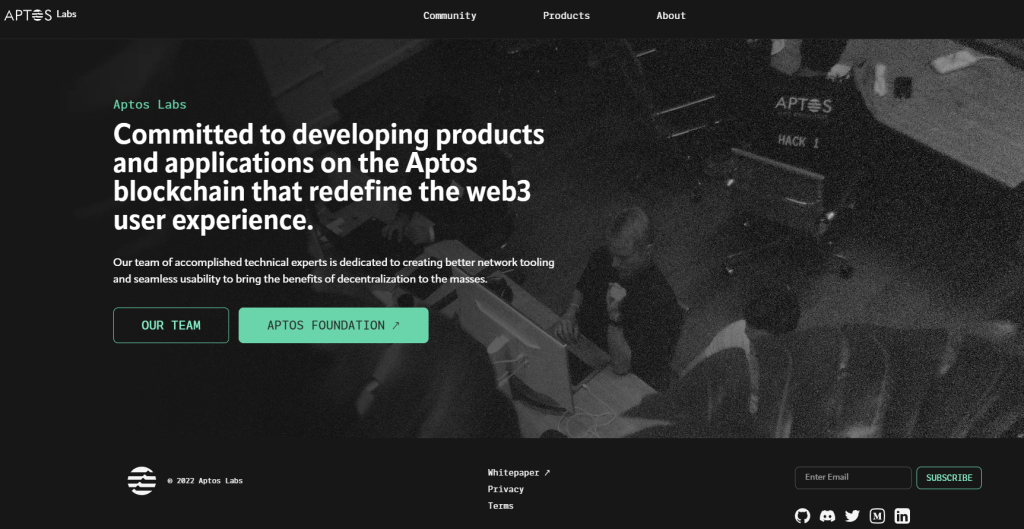
While Aptos is still in the early stages of planning, experts are already beginning to talk about the Aptos blockchain as it has raised millions of dollars from investors. The blockchain is based on the Diem blockchain initiative (from Meta) that was abandoned.
The network plans to launch its native token APT in Q4 2022, which makes the launch of Aptos highly anticipated. This is a project that you might want to keep an eye out for. If the launch is successful, we could see APT explode just like what happened to SOL previously.
🔝 Kadena
Kadena was founded in June 2016 by Stuart Popejoy and Will Martino, both former JP Morgan executives. It enables businesses and organizations to efficiently transact and share data in a decentralized manner. It also seeks to address the issues that current-generation blockchains face – such as speed, scalability, and security.
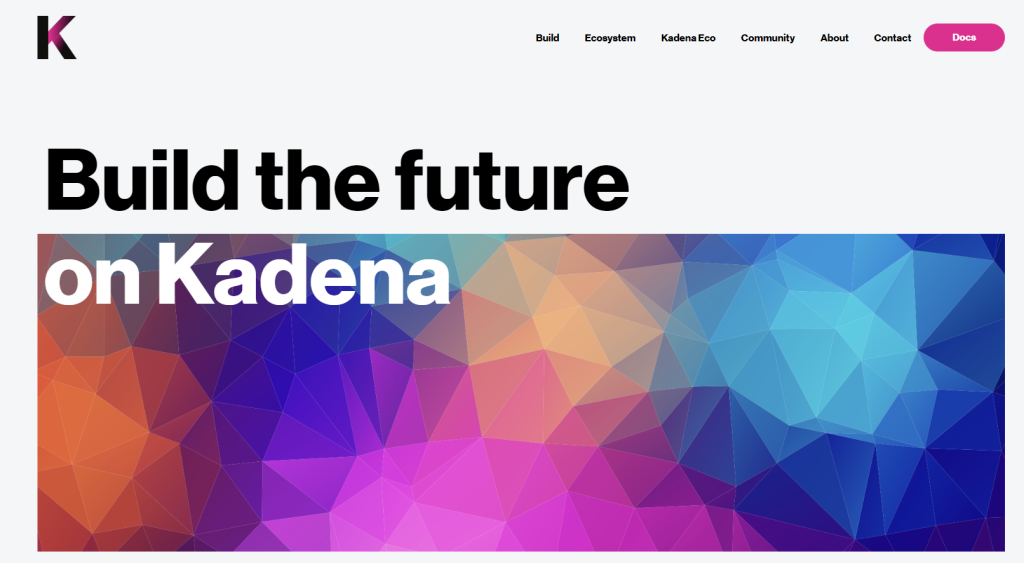
Kadena ecosystem comprises Layer 1 public chain protocol called ‘Chainweb’ and a layer 2 permissioned protocol called ‘Kuro.’ Kadena is the only sharded and scalable Layer 1 Proof of Work (PoW) network in use today. Kadena is indeed one of the best Layer 1 crypto projects in 2022.
Source: shardeum.org
🔝 Secret Network
Secret Network is a Layer 1 blockchain with its own consensus and on-chain governance, built atop the Cosmos/Tendermint framework. It allows for privacy-focused smart contracts. Secret Network provides programmable smart contracts that protect user data by enabling encrypted inputs, outputs, and smart contract states.’

Differentiators
Secret Network is designed to empower decentralized applications that demand a level of privacy not found on open-source blockchain networks generally
SecretSwap is Secret Network’s answer to popularDeFiplatforms like Uniswap and PancakeSwap. On the Secret mainnet, it is across-chaindecentralized exchange. It provides similar functionalities like other DEXs. SecretSwap charges fees in SCRT, which is said to be cheap.
🔝 Moonbeam
Moonbeam is a parachain on layer 0 network, Polkadot. It allows cross-chain integration between other protocols through bridges and parachain connectivity. Moonbeam also has a smart contract platform that is Ethereum-compatible.
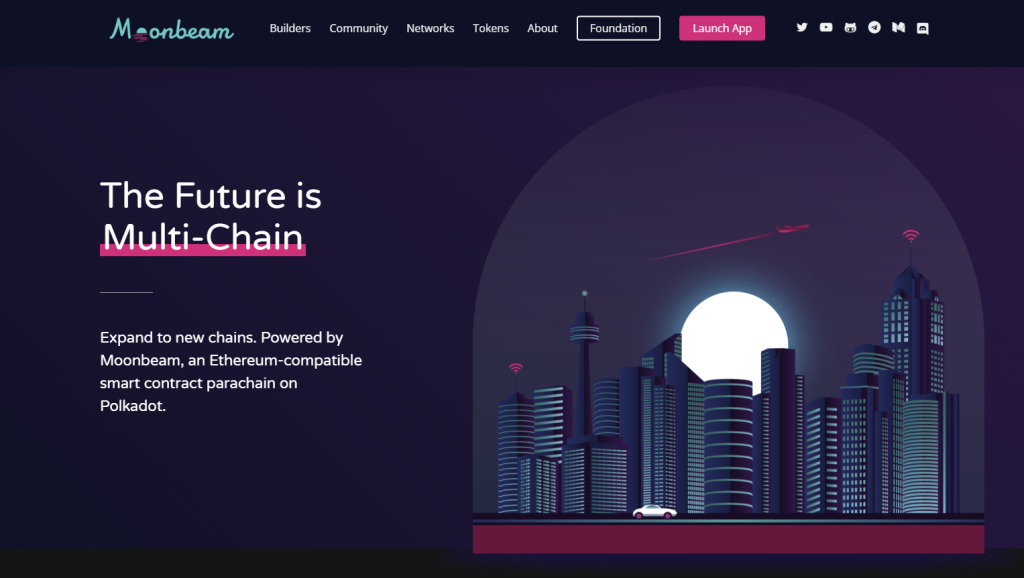
Moonbeam is built in Rust programming language with a substrate framework. Rust is similar to C++ in syntax and additionally has built-in memory features during compilation which prevents bugs and security issues. Substrate framework is a blockchain development framework with multiple modules on Rust. Smart contracts can be implemented using Solidity, Vyper, or any other language compatible with EVM.
Moonbeam’s blockchain works on Polkadot’s Proof of stake model. Collators collect transactions on the Moonbeam parachain and produce state transition proofs for validators on the relay chain at the protocol level. The top stakers are selected as collators, and a part of the block reward goes to them.
Moonbeam also has an additional layer for consensus called Nimbus. The parachain stakers form the active collator pool. Nimbus applies a filter and chooses candidates who are subsets of the parachain staking pool as collators. These collators are changed every 600 blocks. A second filter is applied to a random subset of these selected candidates for each block.
Source: shardeum.org
Differentiators
Moonbeam is designed to provide entry points for DApps to scale from/to Ethereum and Polkadot parachains which in turn provide bridges to other blockchain protocols.
Moonbeam uses a Polkadot collator and validation network with an additional layer of the filter. Security has been a point of discussion for cross-chain protocols. According to Vitalik, “Cross-chain activity has an anti-network effect” with a focus on security risks. Polkadot claims to solve this by moving the economic incentives to the relay chain.
🔝 Aurora
Aurora is one of the top Layer 1 crypto projects for 2023, offering developers a full-featured Ethereum Virtual Machine (EVM) as well as a powerful cross-chain bridge.
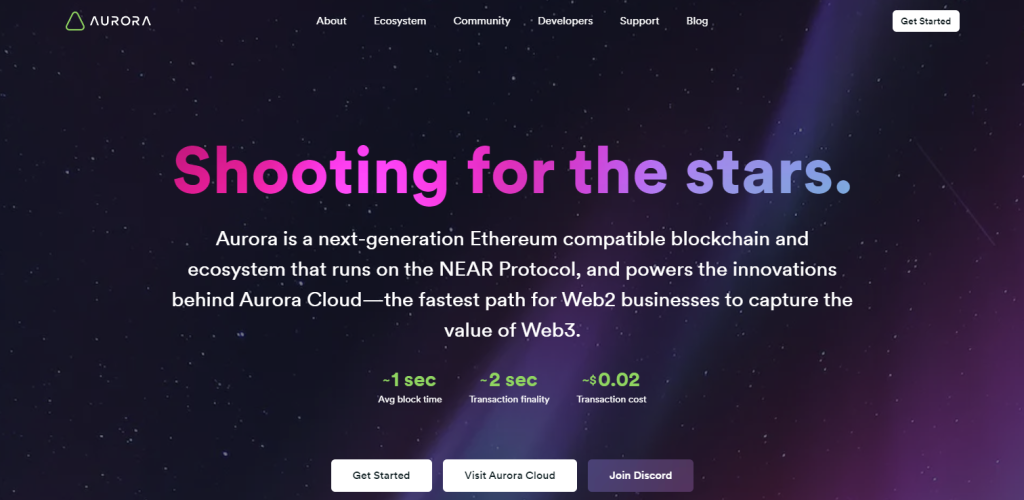
By linking to other Ethereum contracts and assets, developers can launch their dApps on Aurora in just minutes. Plus, the Bridge ensures that all assets can flow seamlessly between the Ethereum and NEAR blockchains, making it easier to merge economies and encouraging creator communities to grow.
To top it off, gas prices are kept low so transaction costs stay affordable at around a few cents per transaction. Yet these transactions still process incredibly quickly, with each completing in less than two seconds! Aurora’s governance is also part hybrid decentralized organization and part traditional entity structure which allows it to offer reliable protection while remaining responsive to user needs. With such advantages, Aurora definitely continues its upward trajectory as one of the best Layer 1 crypto projects for 2022!
🔝 Flow
Flow is one of the top layer 1 blockchains in the crypto landscape. It’s designed to serve as a foundation for games, apps, and digital assets that would open up new avenues for innovations. Created by Dapper Labs, this blockchain leverages Cadence – an original programming language specifically tailored for digital assets.
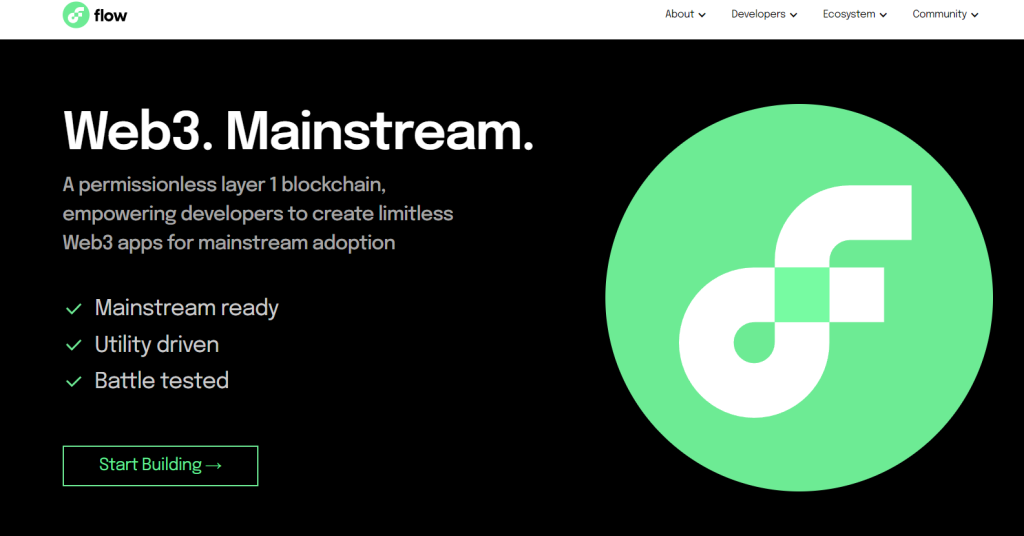
Flow relies on HotStuff as its consensus mechanism; it adds a multi-node architecture which makes it incredibly fast in terms of speed, throughput, and energy efficiency since there’s no need for sharding or “layer two” solutions.
Developers who use Flow will benefit from creating Decentralized Applications (DApps) and cryptos enabled businesses. On the Flow network, users can create new types of digital assets which are tradable through open markets – all while keeping total control over their data and financial records. Plus, they can build open economies that are completely owned by the community!
🔝 Metis
Metis is a Layer 1 blockchain protocol that enables developers to build fast, secure and decentralized applications. Metis is based on the Cosmos-SDK framework and utilizes Tendermint consensus which provides high throughput scalability, low latency finality, and improved security. It also supports cross-chain interoperability so applications can interact with other blockchains like Bitcoin and Ethereum.
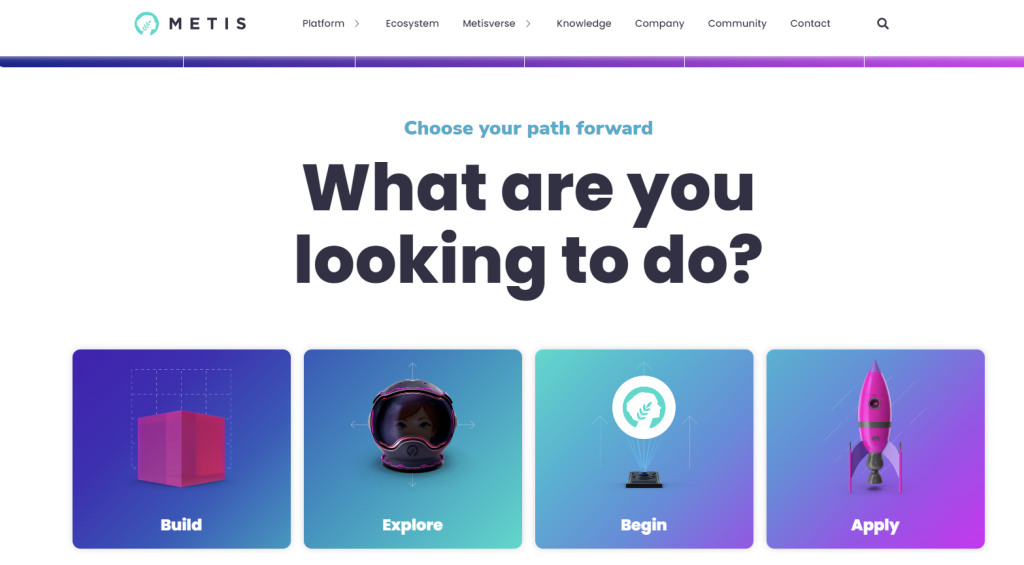
The main differentiators of Metis include its consensus algorithm and its ability to process thousands of transactions per second. It also features smart contract functionality, allowing developers to build complex applications on top of the network. In addition, Metis has a built-in token economy that incentivizes developers and users while promoting network security.
🔝 Hive
Hive is a Layer 1 blockchain protocol that enables developers to quickly and easily create decentralized applications. It uses a delegated proof-of-stake consensus algorithm with an on-chain governance system, which allows users to propose and vote on changes to the network.
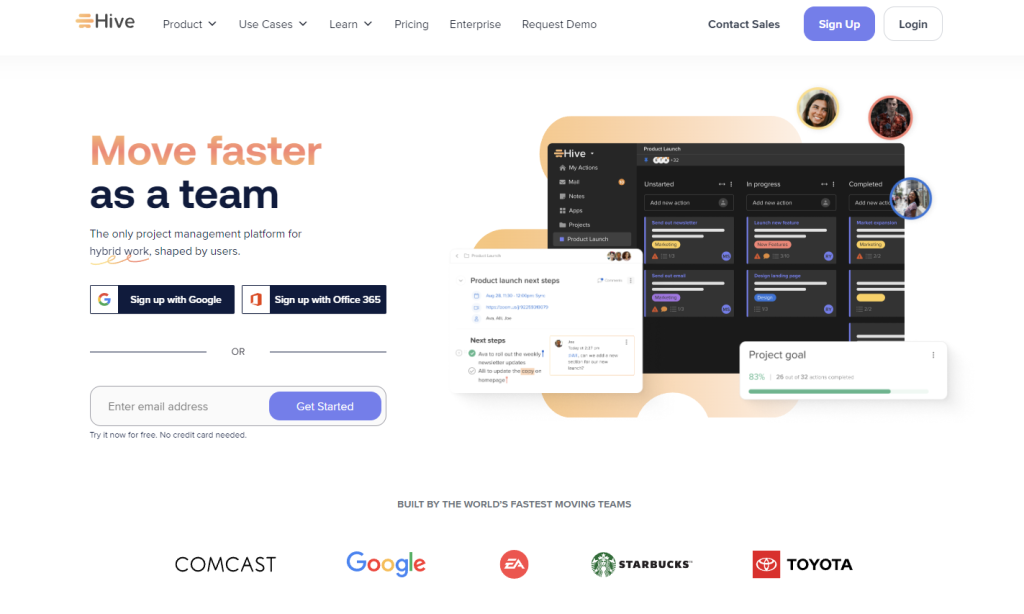
Hive also supports cross-chain interoperability and provides high throughput scalability, low latency finality, and improved security. The underlying technology is based on the Cosmos-SDK and Tendermint consensus, which makes it an ideal platform for developers to build secure and robust applications.
💱 Where to Buy the Best Layer 1 Crypto Projects: Tips and Tricks
If you’ve been looking for the best Layer 1 crypto projects to invest in, then you’ll need to know where to purchase them. Thankfully, purchasing cryptocurrencies such as BTC is relatively easy with platforms like Bybit. Bybit has a sleek and intuitive interface that makes buying Bitcoin and other currencies detailed in this Layer 1 list straightforward.
When it comes to buying cryptocurrencies on Bybit, there are several methods available, including credit/debit cards or exchanging other cryptos for Bitcoin. Since the process of buying Bitcoin can seem intimidating at first, it’s worth taking the time to research different platforms and methods before taking the plunge into investing.
Additionally, you’ll want to be sure to consider any fees associated with each platform you consider purchasing from. It’s also important not to overlook the importance of making sure that all transactions are secure when using any cryptocurrency exchange service. Following some basic tips and tricks will help ensure that your investments are safe and successful!
👍 Final Words: Making the Most of Your Layer 1 Crypto Investments During Bear Markets
Making smart investments in Layer 1 cryptos can be a great way to make money even during bear markets. Now that you have learned about the available Layer 1 projects, you know which are fundamentally strong and which are worth your investment. Each of the 18 different options will stand out for specific reasons, so it is important that you do your research.
With this knowledge at hand, you will be better equipped to make informed decisions regarding layer 1 crypto investments. You should take advantage of trading platforms such as Bybit where there are no fees incurred when trading cryptos- and get started on your crypto journey immediately! Make sure to use this key piece of information to make the most out of layer 1 crypto investments, even during bear markets.








